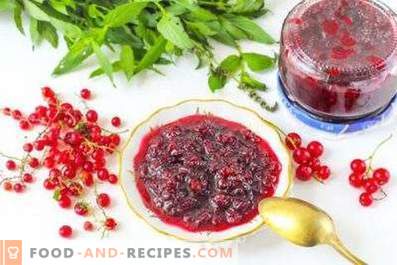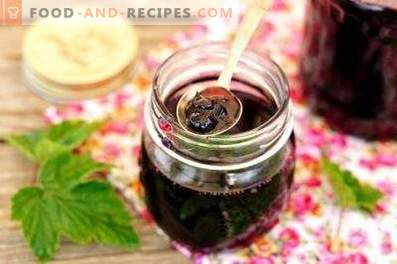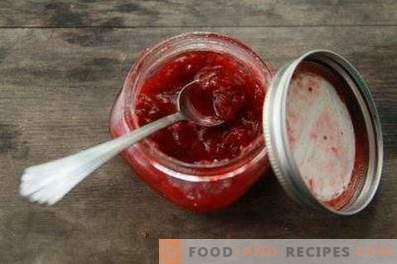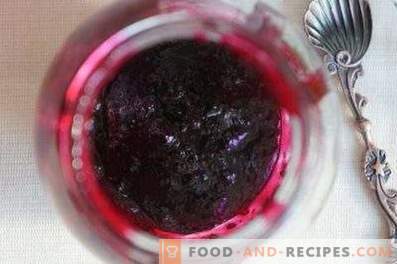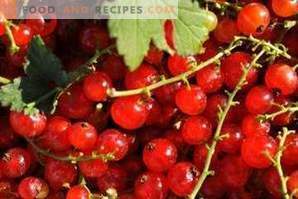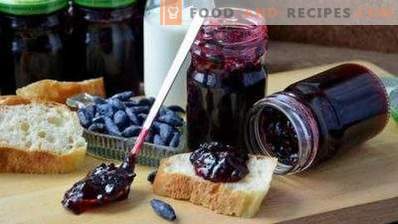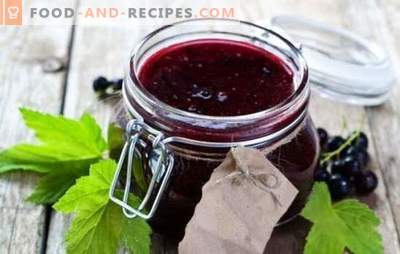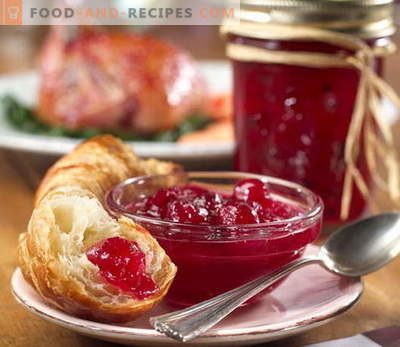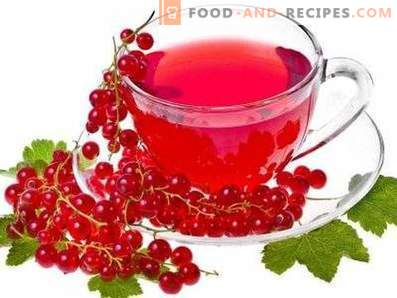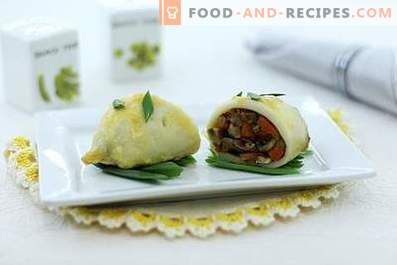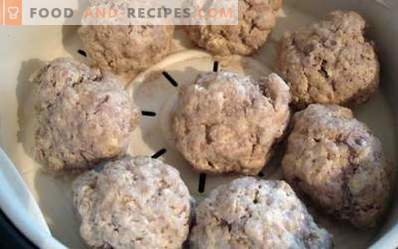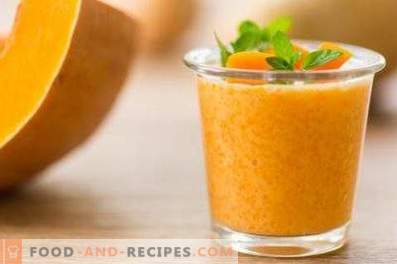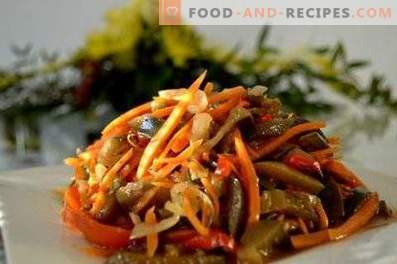
Red currant - unpretentious, but fruitful culture. Many housewives make of it various blanks for the winter. One of the most popular options is red currant jam. It has a bright and appetizing color, a pleasant sweet-sour taste with subtle tart notes. It can be served as a stand-alone dessert or used in the preparation of sweet pastries as a filling. Even an aspiring cook will be able to make this exquisite delicacy.
Cooking Features
Inexperienced housewife may seem that at home to cook the jam is difficult. In fact, this task is on the shoulder even to someone who has no culinary experience. You just need to be patient and get acquainted with the main features of the process.
- Redcurrant is very fragile and is not stored for a long time. It should be collected in small containers so that the lower berries do not suffer from the weight of the upper layers. It is necessary to process red currants on the same day when it was collected, or on the next.
- Red currant should be washed and dried before use. Wash it in a large container with clean water or in the shower. A jet of water can damage a delicate berry. To currant dried out faster, it is scattered on a towel that absorbs moisture.
- The most painstaking work in preparing red currant delicacies is the removal of twigs. It is not necessary to carry it out, if in the future you curl the currants through a sieve: the branches will remain in it along with pieces of skin and small bones. The consistency of jam because of this will be very tender.
- To make the currant easier to grind through a sieve, it is first interrupted by a blender or boiled for 10 minutes in a small amount of water. Refusing to use water is possible if you warm the currants in the oven.
- Red currant contains a lot of pectin, and jam can be cooked from it without adding thickeners. However, in order to make the consistency of the jam more dense or to speed up the process of preparing a treat, you can add pectin, gelatin or some other gelling component to it. This will shorten the cooking time, so that the finished dessert at the exit will be a little more.
- Gelling products are available in a large assortment, their composition and consistency may vary, and the characteristics of their application depend on it. On how to properly use the product and how much it is added to the berry mass for making jam, the manufacturer informs on the package. Do not ignore these recommendations.
- To prevent red currant jam from spoiling, cans and suitable covers are sterilized.
- Red currant jam is not recommended to be cooked in aluminum cookware, since this material, coming into contact with acids, forms harmful substances.
- Wide containers (basin, bowl, stew-pan) are well suited for cooking the jam, since they have a large evaporation area, and the excess liquid from the berry mass evaporates more quickly.
The storage conditions for red currant jam depend on the chosen recipe. It usually costs well at room temperature, not souring or molding for a year or even two years.
Classic red currant jam recipe
Composition (for 1, 25 l):
- red currant - 1 kg;
- sugar - 1 kg;
- water - 100 ml.
Method of preparation:
- Rinse the red currants. Fold in the pelvis.
- Splash some water. Put the pelvis on a slow fire.
- Warm up 10 minutes after the liquid in the basin boils.
- Remove the pelvis from the stove, let the berry cool slightly, wipe it through a sieve.
- Currant puree return to the pelvis, mix with sugar. Let stand 30-60 minutes to at least partially dissolve sugar.
- Tomit over low heat until the berry mass is reduced to the desired consistency. Remember that when it cools down, it will become noticeably denser.
- Sterilize the jars and their lids.
- Fill jars with hot jam.
- Roll up the cans.
Jam made from red currant according to this recipe is well kept at room temperature. It has a pleasant taste and delicate texture.
Red currant jam with pectin
Composition (for 1, 25 l):
- red currant - 1 kg;
- sugar - 0, 8 kg;
- water - 100 ml;
- pectin - 1 sachet.
Method of preparation:
- Pour some water on the bottom of the enamel basin, put the prepared berries.
- Boil for 10 minutes after boiling. Allow to cool slightly, wipe through a sieve.
- Mix berry puree with three cups of sugar (0, 75 kg).
- Bring to a boil over low heat and boil, stirring and removing the foam for half an hour.
- Mix pectin with the remaining sugar, sprinkle the berry mass with this mixture. Stir.
- Cook another 4-5 minutes, remove from heat.
- Spread the jam on prepared banks, cork them tightly.
It is recommended to keep this dessert in a cool room, although practice shows that at room temperature it also costs quite well.
Red currant jam with gelatin
Composition (2 liters):
- red currant - 1 kg;
- sugar - 1, 2 kg;
- water - 0, 5 l;
- instant gelatin - 40 g;
- lemon - 0, 5 pcs.
Method of preparation:
- Pick and wash the currants, fill with 100 ml of water, warm for 10-15 minutes, rub through a sieve.
- Squeeze the juice from half a lemon into the currant puree, add sugar.
- Heat over low heat and boil for 10 minutes, periodically removing the foam that forms on the surface.
- Pour gelatin with cool boiled water in the amount of 0, 4 l, mix well.
- Pour into berry mass, simultaneously stirring it in one direction.
- Hold on fire for 1-2 minutes, remove from heat.
- Fill the jars with sterilized jars, tightly close them with metal lids.
Once the jam has cooled to room temperature, the jars with it should be put in the fridge. The advantages of this recipe are saving time and a large yield of the finished product, the disadvantage is the need for storage in cold.
Red currant jam has a delicate texture, bright color and a pleasant taste. If you have harvested a large crop of this berry, it makes sense to prepare at least part of it for the winter in the ways described above.
